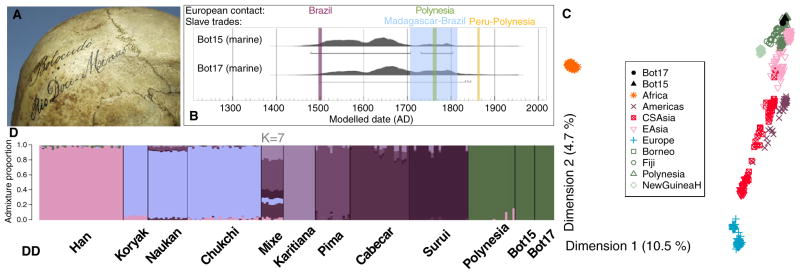Figure 1. Radiocarbon and genetic evidence for Polynesian ancestry among Botocudos.

(A) Botocudo 17 skull. Lateral photograph of Bot17 showing a close-up of the labeling. (B) Calibrated 14C dates for Bot15 and Bot17. We assumed 60 ± 16% (Bot15) and 30 ± 16% (Bot17) marine carbon dietary uptake, respectively, and a reservoir age that is equivalent to the average world ocean reservoir to compute the calibrated 14C dates and associated 95% highest posterior density regions (horizontal lines). The colored bars indicate four pertinent historical events: the European discovery of Brazil (purple), the established European contact with Polynesian islands (green), the Madagascar-Brazil slave trade (blue), and the Peru-Polynesia slave trade (orange). The uncalibrated dates for the samples are Bot15 OxA-27184 408 ± 24BP and AAR-17522 417 ± 25BP and Bot17 AAR-17657 487 ± 25BP. (C) MDS plots. Multidimensional scaling (MDS) plots (dimension 1 and 2) based on an identity-by-state distance matrix between individuals from worldwide populations (SNP chip data) and the whole genome Bot15 and Bot17 data. Populations are colored by broader geographic areas as follows: Africa: Bambaran, Dogon, YRI; Europe: CEU, Iraqi, Slovenian; EAsia: CHB, JPT, Thai, Mongolian; CSAsia: Kyrgyzstan, Nepalese, Pakistanis; Americas: Bolivian, Totonac; NewGuineaH: New Guinea Highlands. The reference panel includes around 820,000 SNPs and the overlap between Bot15 or Bot17 and the reference panel is around 640,000 SNPs. Note that MDS plots obtained after removing transitions (reducing the effect of ancient DNA damage) are almost identical. Appropriate references and results for other datasets are shown in Supplemental information. (D) Clustering analysis. NGSadmix analysis for K = 7 based on SNP chip data and the Botocudo whole genome sequence data. The SNP chip data includes Asian (Han), Siberian (Koryak, Naukan, Chukchi) and Native American (Mixe, Karitiana, Pima, Cabecar, Surui) samples. The Bot15 and Bot17 genomes are represented with wider bars on the right-hand side. Appropriate references, results for other datasets and other values of K can be found in Supplemental Data.
